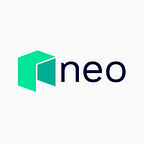The Core Value of Ecosystems — Focus or Diversification?
Neo Ecosystem in Retrospect: The Past Four Years and Beyond.
Four years have passed since the Neo MainNet went live in 2016. Four years is fairly short for the traditional economy, but a fairly long time in the blockchain sphere. Within a mere four years, Neo has grown into a leading public chain with ten core communities and 500,000 community members word wide. Today, the Neo MainNet processes over 50,000 transactions per day for over 2 million wallet addresses.
Throughout our history, we have continuously pondered the question of “what is a good ecosystem?” What makes for a strong community? In the past few years, the blockchain industry has evolved to increasingly embrace business solutions such as dApps, DeFi, STOs, and more — something which we agree with. At present, our ecosystem is home to over 40 dApps which attract over 10,000 users per day. Moreover, we’ve developed a range of business solutions in partnership with leading projects, including STO innovations with Liquefy, NeoID developments with Swisscom, and NeoFS with NSPCC. Moving forward, we’re excited to announce that Demex, our decentralized margin trading platform, is set to go live soon as we continue building the smart economy of the future.
Ecosystem: Driving Diversification to Deliver Value
Say a sound ecosystem has been established — but how are we to evaluate its value? In my opinion, what this question really gets at it the relationship between an ecosystem and its public chain. Both elements play key roles in an ecosystem’s success; the public chain is the technical core of the entire ecosystem while eco-projects are at the heart of a network’s value added. Thus, technology determines the advantages of the public chain while the ecosystem determines how the public chain is used.
To that end, I strongly believe that diversification and a focused approach to ecosystem development are key for success. Since blockchain is still in its infancy, large-scale uses cases haven’t emerged — yet. As development continues to accelerate, I believe it’s only a matter of time before we see large-scale implementation. Thus, our approach is two-pronged; on one hand, we will explore and capitalize on opportunities across various fields important to retain development possibilities in multiple fields. On the other hand, we will also lean into our unique comparative advantage and technological edge to fulfill our team vision.
Moreover, we’re also committed to optimizing resourcing usage in a strategic manner to drive smart development. Through our EcoBoost Project, we have supported over 10 projects across different development stages and fields, ranging from DEX, Wallets, dApps, and infrastructural protocols — just to name a few. Through a tailored approach, we are accelerating project development through by delivering essential and comprehensive support, ranging from funding to technological support and access to distribution channels. Through EcoBoost, we are fostering an environment which empowers developers to realize their vision within the Neo ecosystem. In the future, we will continue supporting high-potential projects, particularly within the field of digital assets. As Neo3 nears completion, our MainNet will evolve to become more conducive to facilitating the flow of multiple assets by delivering enhanced stability and security.
Neo3: Early Adoption Program
As we approach Neo3, we will soon by launching the Early Adoption project, a program aimed to facilitating the migration from Neo2 to Neo3. To that end, we plan to deliver funding support and resources to encourage more projects to join Neo3 testing. With your help and feedback, we are confident that Neo3 will become one of the building blocks of the smart economy of the future.
Author: John Wang
